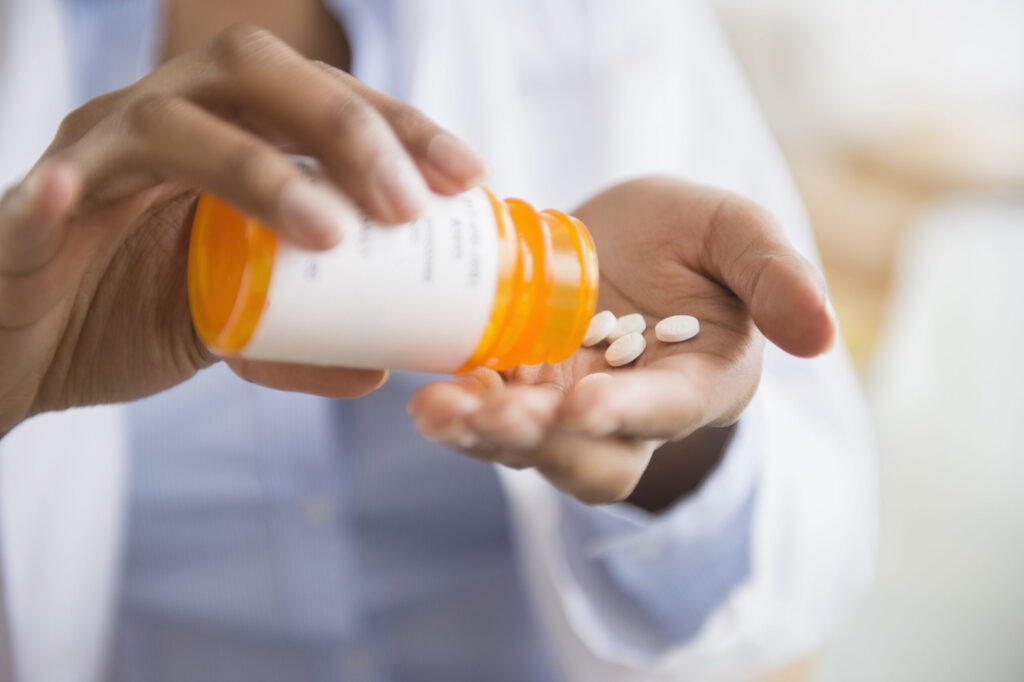Despite concerns from some Republicans, lawmakers gave Maryland’s Prescription Drug Affordability Board the OK Tuesday to proceed with a plan to set an upper payment limit on six popular prescription drugs for state health plans. Getty Images.
Lawmakers gave final approval Tuesday for the Prescription Drug Affordability Board to implement a plan that could set an “upper payment limit” on prescription drugs that state and local agencies buy for their employees’ health plans.
The Legislative Policy Committee, composed of state senators and delegates, voted 16-to-5 to let PDAB proceed with the plan, which aims to bring down agency costs for prescription drug costs as one of the tools used to lower drug costs for employees on the state’s health care plan.
The committee is chaired by Senate President Bill Ferguson (D-Baltimore City) and House Speaker Adrienne Jones (D-Baltimore), who said Tuesday that prescription drug costs have become “unjustifiably expensive” and supported the board’s effort to lower costs.
“Today marks another step in what has been a deliberate and transparent five-year process,” Jones said during the virtual meeting. “I am confident that the board and its staff will continue to listen to everyone involved as they implement this action plan, and we can make some prescription drugs more affordable without upending the marketplace.”
All five Republicans present for Tuesday’s meeting voted against the plan. Senate Minority Leader Stephen S. Hershey Jr. (R-Upper Shore) was unconvinced that the plan would result in lower costs for patients and believed it could even lead to unintended consequences.
“I think we’ve had enough conversations … trying to find ways to lower prescription drug costs for the patients themselves. Unfortunately, I don’t think that this process works, so I am going to vote against it,” Hershey said. “We are talking about this as though patients and customers will see some type of difference when they go to pay for their prescription drugs. That’s not the correct message that should be going out as a result of this.”
The Upper Payment Limit Action Plan does not actually limit costs yet – it merely sets up a tool for prescription cost reduction efforts for six prescription drugs if the board determine those drugs are unaffordable based on state standards.
“The Upper Limit Action Plan creates an extremely robust process that’s transparent with significant opportunities for public comment and community engagement from patients, clinical experts and other experts,” Andrew York, executive director for the board, told the committee Tuesday.
Now that the plan has been approved, PDAB staff can begin evaluating whether six drugs previously selected for cost review could see price reductions by setting upper payment limits, along with other cost reduction measures.
In September, the board finalized the Upper Payment Limit Action Plan that lawmakers approved Tuesday, which includes a lengthy information collection stage and opportunities for public comment to determine if setting a limit on how much state agencies can pay for specific prescription drugs will lead to reductions in cost.
The board doesn’t have to set upper payment limits if they would not result in lower costs or could result in issues in access to those drugs.
Since the board’s inception in 2019, it has been involved in a lengthy rule-making process to get underway, to determine what drugs could be expensive for state employees and to establish methods to bring those costs down. In May, the board finally selected six drugs to undergo the “cost review process” to determine if they are “unaffordable” for Marylanders.
Hershey said he worried that upper payment limits could affect access to particular prescription drugs.
“There are concerns about accessibility to prescription drugs, as different manufacturers talked about, if they were limited to what their costs could be,” he said. “I think that could be a very detrimental result of this.”
However, health care advocate Vincent DeMarco was thrilled by Tuesday’s vote, and he believes that savings are on the horizon. He is the president of the Maryland Health Care For All Coalition and a staunch supporter of the board’s efforts.
“We’ve been waiting for this since 2019, because this is the essential piece that needed to be done by the legislature before the PDAB can begin its historic work to make high-cost drugs more affordable for state and local governments,” DeMarco said.
DeMarco is pushing to expand the board’s authority so that it could set upper payment limits for all Marylanders, not just those who are on a state health care plan. He hopes to see reintroduction next year of a bill to do just that, which failed in the 2024 General Assembly.
“We are confident based on the work they’ve done so far to use this authority to help state and local governments in Maryland save money, and that will be great for Maryland taxpayers and everybody in government,” he said.

